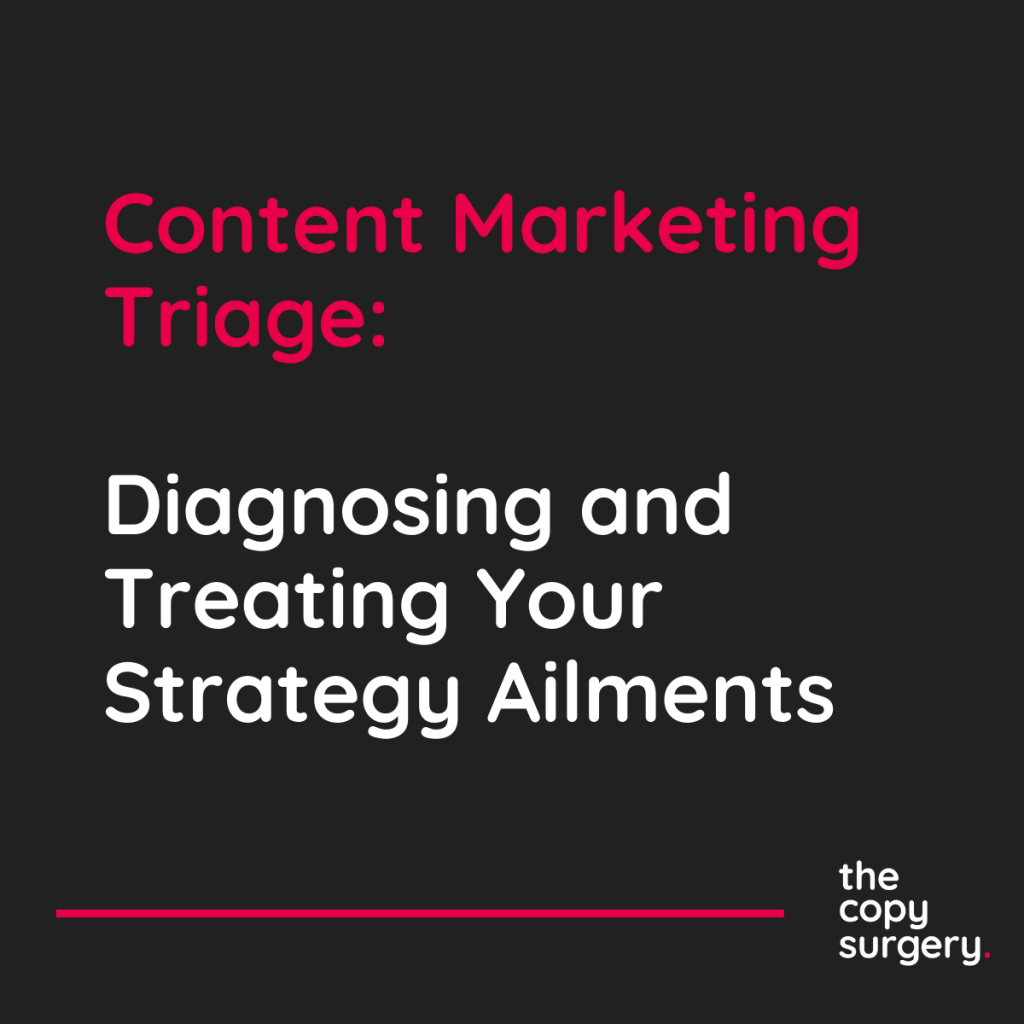Welcome to the A&E of Content Marketing, where flailing strategies are given a new lease of life, and your business’s pulse gets a healthy shot of adrenaline! If your content feels a bit like it’s on life support, wheezing every time Google rolls out an update, sit tight. We’re about to wheel it into the operating room and revive that heartbeat.
Diagnosis: Recognising the Symptoms of a Sickly Strategy
What are the troubling symptoms your content strategy is exhibiting? Low traffic? Conversion rates that are barely palpable? Content about as engaging as a waiting room magazine from 1997? If you nodded (or cringed) in recognition, your strategy needs a serious diagnostic check-up.
The Stethoscope Moment
Listen—really listen—to what your analytics are telling you. Low engagement might be your content whispering for help. It’s time to press the analytics stethoscope to your strategy’s chest and take note of the heartbeat. Is it regular and strong, or weak and erratic?
Planning Your Content Marketing Strategy
Let’s solve the problem and carve out a strategic plan.
Setting Objectives
What’s the goal here? More visitors, more engagement, higher conversions? Set SMART goals to start your strategy off on the right foot. Typically, you should think about elements like:
Boosting Page Views: One objective could be increasing organic traffic to your website. Aim for a healthy spike in page views as a sign of improved brand visibility. A goal such as “increase website traffic by 20% in the next 6 months” might be a good start.
Enhancing Engagement: Setting a goal to boost engagement on your blog posts or social media can bring your content back from the brink. Think along the lines of “double the average comments and shares on our content pieces by Q3.”
Increasing Conversions: If conversions feel cold, it’s time to turn up the heat. A goal might be to “increase lead conversion rates by 15% by the end of the fiscal year.”
Trimming Down the Bounce Rate: Is your website’s bounce rate bloated? Let’s put it on a diet. Aim to “reduce bounce rate by 10% within the next quarter.” Streamlining navigation and refining content can be the cure you need for a site people want to spend time on.
Boosting SEO: If your online presence is a bit flabby, set objectives around strengthening your SEO. Bulking up your keyword strategy might be just what the doctor ordered. Try “to rank in the top 20 search results for 5 key industry phrases by year-end.”
Cultivating Thought Leadership: Want to be seen as the leading authority in your field? An objective could be “to publish 10 guest posts on industry-leading blogs within six months”, positioning your brand’s thought leadership to flex its intellectual muscles far and wide.
Audience Analysis
Who are we treating? Understanding your audience is critical; get this wrong, and it’s like prescribing glasses to a patient who needs a hearing aid. Tailor your message to meet your target audience’s demographic, psychographic, and behavioural needs.
Content Inventory and Audit
Think of this as your whole body scan. What content do you already have? What’s performing well? What’s lying in the corner covered in dust? An audit may reveal outdated pieces that need a revamp or successful pieces that could inspire sequels.
Crafting and Executing Your Strategy
With your plan drawn up, it’s time to move to your content calendar.
Creating Your Content Pillars
Your pillars are the backbone of your content body. Define them clearly—blog posts, eBooks, videos, or podcasts, each should support and enhance your strategy’s work.
Content Calendar
Timing is everything in marketing. Plan your content release schedule with the precision of a neurosurgeon. An editorial calendar acts as your schedule—keeping you on track and ready to deliver at the right time.
Dose and Frequency
Just like medication, the dosage of your content can mean the difference between relief and a flat line. Find the right balance in frequency and volume to keep your audience healthy and hungry for more without overwhelming them.
Post-Op Care: Distributing and Promoting Your Content
No good surgery ends without proper follow-up care. Where and how you distribute your content can make or break its efficacy.
Choice of Channels
Not every social platform suits the needs of your content. Choose where to share based on where your audience likes to hang out—LinkedIn, X, Facebook, Instagram, or TikTok?
Engagement Enhancement Techniques
This is like physio for your content. Use engagement strategies to promote interaction—ask questions, encourage comments, and run polls.
Follow-Up Check: Analysing Your Content’s Performance
Routine checks are crucial. Use analytics to monitor your content’s performance. Which posts are hitting their goals? Which ones are still bed-ridden?
Adjusting the Treatment Plan
Adjust your strategy based on the feedback and data from these checks. Iterate, evolve, and improve—your content’s life depends on it!
Discharge and Home Care
As we roll your content strategy out of the recovery room, decked out with a fresh strategy and a stronger pulse, remember: the health of your content marketing should never be left to chance. Regular check-ups, constant monitoring, and the willingness to change prescriptions as needed will ensure it stays vibrant and healthy.
Now, don’t forget your follow-up appointment! Come back to check on more insights and tips, and remember, in the world of content marketing, prevention is always better than cure. Let’s keep that strategy fit and thriving, shall we?

